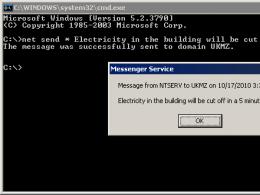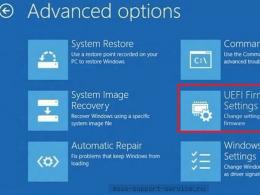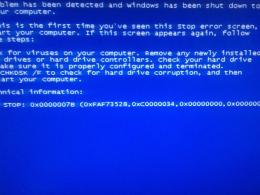Starting a fluorescent lamp without a starter. How to connect a fluorescent lamp - connection diagrams
Fluorescent lamps from the very first releases and partially still ignite with the help of electromagnetic ballasts - EMPRA. The classic version of the lamp is made in the form of a sealed glass tube with pins at the ends.
What do fluorescent lamps look like?
Inside it is filled with an inert gas with mercury vapor. Its installation is carried out in cartridges through which voltage is applied to the electrodes. An electric discharge is created between them, causing an ultraviolet glow, which acts on the phosphor layer deposited on the inner surface of the glass tube. The result is a bright glow. Switching scheme fluorescent lamps(LL) is provided by two main elements: an electromagnetic ballast L1 and a glow discharge lamp SF1.

LL switching circuit with electromagnetic choke and starter
Ignition circuits with EMPRA
A device with a throttle and a starter works according to the following principle:
- Applying voltage to the electrodes. The current through the gas medium of the lamp at first does not pass due to its high resistance. It enters through the starter (St) (fig. below), in which a glow discharge is formed. In this case, a current passes through the spirals of the electrodes (2) and begins to heat them.
- The starter contacts warm up, and one of them closes, since it is made of bimetal. The current passes through them, and the discharge stops.
- The starter contacts stop warming up, and after cooling, the bimetallic contact opens again. In the throttle (D), a voltage pulse arises due to self-induction, which is sufficient to ignite the LL.
- A current passes through the gaseous medium of the lamp; after starting the lamp, it decreases along with the voltage drop across the inductor. The starter remains disabled, since this current is not enough to start it.

Fluorescent lamp switching circuit
Capacitors (C 1) and (C 2) in the circuit are designed to reduce the level of interference. Capacitance (C 1), connected in parallel with the lamp, helps to reduce the amplitude of the voltage pulse and increase its duration. As a result, the service life of the starter and LL is increased. The capacitor (C 2) at the input provides a significant reduction in the reactive component of the load (cos φ increases from 0.6 to 0.9).
If you know how to connect a fluorescent lamp with burnt filaments, it can be used in the CMP circuit after a slight change in the circuit itself. To do this, the coils are short-circuited and a capacitor is connected in series to the starter. According to this scheme, the light source will be able to work for some more time.
A widely used method of switching on with one throttle and two fluorescent lamps.

Switching on two fluorescent lamps with a common choke
2 lamps are connected in series with each other and the inductor. Each of them requires the installation of a starter connected in parallel. For this, one output pin is used from the ends of the lamp.
For LL, it is necessary to use special switches so that their contacts do not stick from high inrush current.
Ignition without electromagnetic ballast
To extend the life of burned-out fluorescent lamps, you can install one of the switching circuits without a choke and starter. For this, voltage multipliers are used.

Scheme for switching on fluorescent lamps without a choke
The filaments are short-circuited and voltage is applied to the circuit. After straightening, it increases by 2 times, and this is enough for the lamp to light up. Capacitors (C 1), (C 2) are selected for a voltage of 600 V, and (C 3), (C 4) - for 1000 V.
The method is also suitable for serviceable LLs, but they should not work with power direct current. After some time, mercury collects around one of the electrodes, and the brightness of the glow decreases. To restore it, you need to turn the lamp over, thereby changing the polarity.
Connection without starter
The use of a starter increases the warm-up time of the lamp. At the same time, its service life is short. Electrodes can be heated without it if secondary transformer windings are installed for this.

Wiring diagram for a fluorescent lamp without a starter
Where a starter is not used, the lamp has a designation quick start– RS. If you install such a lamp with a starter start, it can quickly burn out the spirals, since they have a longer warm-up time.
Electronic ballast
The electronic control circuit of the electronic ballast has replaced the old sources of daylight to eliminate their inherent shortcomings. The electromagnetic ballast consumes excess energy, often makes noise, fails and at the same time spoils the lamp. In addition, the luminaires flicker due to the low frequency of the supply voltage.
Electronic ballast is an electronic unit that takes up little space. Fluorescent luminaires start quickly and easily, without creating noise and providing uniform illumination. The circuit provides several ways to protect the lamp, which increases the service life and makes it safer to work.
The electronic ballast works as follows:
- Heating of LL electrodes. Startup is fast and smooth, extending lamp life.
- Ignition - generating a high voltage pulse that breaks through the gas in the flask.
- Combustion - maintaining a small voltage on the electrodes of the lamp, which is sufficient for a stable process.

Electronic choke circuit
First, the alternating voltage is rectified using a diode bridge and smoothed out by a capacitor (C 2). Next, a half-bridge high-frequency voltage generator on two transistors is installed. The load is a toroidal transformer with windings (W1), (W2), (W3), two of them are connected in antiphase. They take turns opening transistor switches. The third winding (W3) supplies the resonant voltage to the LL.
A capacitor (C 4) is connected in parallel with the lamp. The resonant voltage is applied to the electrodes and breaks through the gaseous medium. By this time, the filaments have already warmed up. After ignition, the resistance of the lamp drops sharply, causing the voltage to drop to a sufficient value to keep the lamp burning. The startup process takes less than 1 s.
Electronic circuits have the following advantages:
- start with any given time delay;
- installation of a starter and a massive throttle is not required;
- the lamp does not blink and does not buzz;
- high-quality light output;
- device compactness.
The use of electronic ballasts makes it possible to install it in the lamp base, which was also reduced to the size of an incandescent lamp. This gave rise to new energy-saving lamps that can be screwed into a regular standard socket.
During operation, fluorescent lamps age and require an increase in operating voltage. In the EMP circuit, the ignition voltage of the glow discharge at the starter is reduced. In this case, an opening of its electrodes may occur, which will cause the starter to operate and turn off the LL. After that it starts up again. Such a flashing of the lamp leads to its failure along with the throttle. In the electronic ballast circuit, this phenomenon does not occur, since the electronic ballast automatically adjusts to changing lamp parameters, choosing a favorable mode for it.
Lamp repair. Video
Tips for repairing a fluorescent lamp can be obtained from this video.
LL devices and circuits for their inclusion are constantly evolving in the direction of improvement specifications. It is important to be able to choose the right models and operate them correctly.
Dear visitors!!!
This method of connecting a fluorescent lamp should be familiar to everyone, in particular for professional electricians. With such a scheme for switching on a fluorescent lamp, there is one characteristic feature of the method of such a connection - which you will have to familiarize yourself with. The information presented in this topic takes place in the training of students in the profession "Electrician of electrical networks and electrical equipment", which I am currently teaching.
How to turn on a fluorescent lamp - no choke
The figure shows two ways to connect fluorescent lamps:
a circuit diagram for switching on a fluorescent lamp with a starter ignition (Fig. 1, a) and a diagram for switching on a fluorescent lamp without a choke (Fig. 1, b).

For both circuits for switching on fluorescent lamps, an increased voltage pulse that contributes to the formation of an arc discharge in the lamps (necessary for their ignition) is the LL inductor and the EL2 incandescent lamp.
The second circuit (Fig. 1, b) shows a circuit for switching on a fluorescent lamp using an incandescent lamp (instead of a choke). In this circuit, there is a current-carrying wire, one end of which is connected to one of the terminals of the electrodes of a fluorescent lamp. Instead of a current-carrying wire, a wide strip of foil can be used, which has the same electrical connection as the wire. Accordingly, both the piece of wire itself and the strip of foil must be fixed at the ends of the bulb with metal clamps to match the diameter of the bulb (fluorescent lamp).
That's all for now. Follow the rubric.
The fluorescent lamp was invented in the 1930s as a source of light and has gained popularity and distribution since the late 1950s.
Its advantages are undeniable:
- Durability.
- Maintainability
- Profitability.
- Warm, cold and colorful shade of glow.
A long service life is ensured by a properly designed start-up and adjustment device by the developers.
Fluorescent lamp for industrial productionLDS (fluorescent lamp) is much more economical than a conventional incandescent bulb, however, an LED device of the same power is superior to a fluorescent one in this indicator.
Over time, the lamp stops starting, flashes, “buzzes”, in a word, does not go into normal mode. Staying and working indoors become dangerous for human vision.
To correct the situation, they try to turn on a known-good LDS.
If a simple substitution fails positive results, a person who does not know how a fluorescent lamp works comes to a standstill: “What to do next?” What spare parts to buy we will consider in the article.
Briefly about the features of the lamp
LDS refers to gas-discharge light sources of low internal pressure.
The working principle is as follows: The sealed glass case of the device is filled with an inert gas and mercury vapor, the pressure of which is low. The inner walls of the flask are coated with a phosphor. Under the influence of an electric discharge that occurs between the electrodes, the mercury composition of the gas begins to glow, generating ultraviolet radiation invisible to the eye. It, exerting an effect on the phosphor, causes a glow in the visible range. By changing the active composition of the phosphor, cold or warm white and colored light is obtained.
 The principle of operation of the LDS
The principle of operation of the LDS 
Expert opinion
Alexey Bartosh
Ask an expertBactericidal devices are arranged in the same way as LDS, but the inner surface of the flask made of quartz sand is not covered with a phosphor. Ultraviolet is freely radiated into the surrounding space.
Connection using electromagnetic ballast or electronic ballast
Structural features do not allow connecting LDS directly to a 220 V network - operation from such a voltage level is impossible. To start, a voltage of at least 600V is required.
Via electronic circuits it is necessary to provide sequentially one after another desired modes work, each of which requires a certain level of stress.
Operating modes:
- ignition;
- glow.
The launch consists in applying high voltage pulses (up to 1 kV) to the electrodes, as a result of which a discharge occurs between them.
Certain types of ballasts, before starting, heat the spiral of electrodes. Incandescence helps to start the discharge easier, while the filament overheats less and lasts longer.
After the lamp lights up, the power is supplied by alternating voltage, the energy-saving mode is turned on.
 Connection with electronic ballast
Connection with electronic ballast  connection diagram
connection diagram In devices manufactured by industry, two types of ballasts (ballasts) are used:
- electromagnetic ballast EMPRA;
- electronic ballast - electronic ballast.
The schemes provide for a different connection, it is presented below.
Scheme with empra
 Connection using EMPRA
Connection using EMPRA Part electrical circuit luminaire with electromagnetic ballasts (EMPRA) includes the following elements:
- throttle;
- starter;
- compensating capacitor;
- Fluorescent Lamp.
 switching circuit
switching circuit At the moment of power supply through the circuit: choke - LDS electrodes, voltage appears on the starter contacts.
The bimetallic contacts of the starter, which are in the gaseous medium, when heated, close. Because of this, a closed circuit is created in the lamp circuit: contact 220 V - choke - starter electrodes - lamp electrodes - contact 220 V.
The electrode filaments, when heated, emit electrons, which create a glow discharge. Part of the current begins to flow through the circuit: 220V - choke - 1st electrode - 2nd electrode - 220 V. The current in the starter drops, the bimetallic contacts open. According to the laws of physics, at this moment, an EMF of self-induction occurs on the inductor contacts, which leads to the appearance of a high-voltage pulse on the electrodes. There is a breakdown of the gaseous medium, an electric arc occurs between opposite electrodes. LDS begins to glow with a steady light.
Further, a choke connected in line provides a low level of current flowing through the electrodes.
Choke connected in a circuit alternating current, works as an inductive reactance, reducing the efficiency of the lamp by up to 30%.
Attention! In order to reduce energy losses, a compensating capacitor is included in the circuit; without it, the lamp will work, but power consumption will increase.
Scheme with electronic ballast
Attention! In retail, electronic ballasts are often found under the name electronic ballast. Sellers use the name driver to refer to power supplies for LED strips.
 Appearance and electronic ballast device
Appearance and electronic ballast device Appearance and design of an electronic ballast designed to turn on two lamps, each with a power of 36 watts.

Expert opinion
Alexey Bartosh
Specialist in the repair, maintenance of electrical equipment and industrial electronics.
Ask an expertImportant! It is forbidden to turn on the electronic ballast without a load in the form of fluorescent lamps. If the device is designed to connect two LDS, you can not use it in a circuit with one.
In circuits with electronic ballasts, the physical processes remain the same. Some models provide preheating of the electrodes, which increases the life of the lamp.
 Type of electronic ballast
Type of electronic ballast The figure shows appearance Electronic ballasts for devices of various power.
Dimensions allow you to place electronic ballasts even in the E27 base.
 Electronic ballast in plinth energy saving lamp
Electronic ballast in plinth energy saving lamp Compact ESL - one of the types of fluorescent ones can have a g23 base.
 Table lamp with G23 socket
Table lamp with G23 socket  Functional diagram of electronic ballast
Functional diagram of electronic ballast The figure shows a simplified functional diagram electronic ballast.
Scheme for serial connection of two lamps
There are fixtures that constructively provide for the connection of two lamps.
In the case of replacement of parts, the assembly is carried out according to schemes that are different for ECG and ECG.
Attention! Schematic diagrams Ballasts are designed to operate with a certain load power. This indicator is always available in the product passports. If you connect lamps of a higher rating, the inductor or ballast may burn out.
 Scheme for switching on two lamps with one choke
Scheme for switching on two lamps with one choke If there is an inscription 2X18 on the body of the device, the ballast is designed to connect two lamps with a power of 18 watts each. 1X36 - such a choke or ballast is capable of turning on one 36 W LDS.
In cases where a choke is used, the lamps must be connected in series.
Two starters will start their glow. The connection of these parts is carried out in parallel with the LDS.
Connection without starter
The electronic ballast circuit does not initially have a starter in its composition.
 Button instead of starter
Button instead of starter However, in circuits with a choke, you can do without it. Collect working scheme a spring-loaded switch connected in series will help - in other words, a button. Briefly turning on and releasing the button will provide a connection similar in action to a starter start.
Important! Such a starterless option will turn on only with whole filaments.
A chokeless version, which also lacks a starter, can be implemented different ways. One of them is shown below.
 Fluorescent What to do if a fluorescent lamp breaks
Fluorescent What to do if a fluorescent lamp breaks
The need of society for lighting devices high power luminescence and at the same time economical in power consumption, as well as durable in operation, are satisfied by manufacturers of DRL lamps and other gas-discharge lamps. They are used to illuminate a large area, materials storage facilities, factory buildings. The DRL lamp can have a power spread from 50 to 2,000 watts, and is connected to a single-phase electrical network with a voltage of 220 volts and a frequency of 50 hertz.
What is a choke for?
The choke for DRL lamps is used for starting, there are different types of lighting devices on the market in which it is used:
All lighting devices have differences in the principle of obtaining a luminous flux, there are other differences:
- different materials are used in their device;
- differ in the presence of chemical elements;
- inside the flasks, the pressure is according to the own parameters of each lighting device;
- they are different in power and brightness of the light flux.
These types of lamps are united by a variable starting current and resistance during starting and further operation.
In order to limit the magnitude of the operating current, lighting devices of this type use different kind ballast: electronic ballast, ballast and empra, which are inductors (chokes). At the moment of starting, each device of this type has a high resistance value; when lighting fixture is ignited, a process of electrical breakdown occurs in an inert gas environment with which the lamp is filled (mercury or sodium vapor), and an arc discharge occurs.
Wiring diagram:

Lamp ignition:

In the process, when the lamp is ignited, the ionized gas loses resistance from the arc discharge by several tens of times, and for this reason the current increases, and heat is released. If you do not limit the amount of current, it will instantly create an overheated gaseous environment, which will lead to breakdown of the lighting device, damaging it from the inside. To prevent this, resistance (choke) is included in the lighting device circuit.
Physical parameters and choke connection diagram
A series-connected DRL choke has a reactance, the value of which depends on the inductor: one henry passes one ampere of current when the voltage is one volt.

The parameters of the inductor include:
- square of copper wire used;
- number of turns;
- what core and size of the cross section of the magnetic circuit;
- what electromagnetic saturation.
The inductor has an active resistance, which is always taken into account when calculating the ballast for each type of lighting device of this type, taking into account its power, the overall dimensions of the inductor depend on this.
Consider a simple circuit turning on the ballast, when electrodes (additional) are provided in the design of the DRL lamp for the process of the occurrence of a glow discharge, which turns into an electric arc.

In this case, the inductance limits the amount of operating current in the lighting device.
Ballast for fluorescent lamps
Structurally, a luminescent lighting device uses a ballast choke to start; electronic ballasts are used in new types of this lighting device, this electronic form ballast device. The task of this device is to contain the increasing value of the current at the same level, which maintains the required voltage on the electrodes inside the lighting fixture.
Consider how the ballast for fluorescent lamps works. When it is connected, a phase shift occurs in the circuit between the voltage and current parameters, the lag is characterized by a power factor, cos φ. When an active load is calculated, this value must be taken into account, since with a small value of this parameter, the load increases, for this reason, a capacitor is also included in the start circuit, which performs a compensation function.

Specialists in power loss parameters distinguish between several versions of these lighting devices:
- the usual type of execution, with the letter D;
- lowered version, with the letter B;
- low version, with the letter C.
The use of ballast has its positive aspects:
- lighting device works safe mode, it is necessary to use a starter to start;
- there is an ability to restrain the value of the current at a set level;
- the luminous flux becomes much more stable, although there is no way to completely remove the flicker;
- the cost of such a design of the lamp is available for general consumption.

 Connecting lamps using a capacitor with a compensation function
Connecting lamps using a capacitor with a compensation function There is a way to connect a fluorescent lighting device without using a ballast, but for this it is necessary to double the mains voltage with a rectified current, and use an incandescent lamp instead of a ballast. The scheme of such inclusion:

How to make a choke yourself?
Due to their parameters, arc lighting devices with a power of 250 or 125 watts are used by society to illuminate the following premises:
- garage cooperatives;
- summer cottages;
- Vacation home.
You can buy a lighting device of this type in a store or on the market, the problem often arises of how to find a choke for DRL lamps, the cost of a choke may be higher than the lamp itself due to design features and the presence of copper wire.
Folk ideas for making a ballast for a DRL 250 lamp from other materials will help solve this issue: three chokes for a fluorescent lamp with a lamp power of 40 watts or two chokes from a fluorescent lamp with a power of 80 watts. In our case, in order to light the DRL lamp using a home-made do-it-yourself ballast, it is recommended to use two 80-watt chokes and one 40-watt ballast, the connection is shown in the photo.

It can be seen from the diagram that all ballasts form one choke, it is possible to assemble the starting ballast in a common box. Important! Particular attention should be paid to the contacts on the chokes, they must be reliable so that they do not heat up and do not spark.
How can I start a DRL lamp without a throttle?
It is possible to start a 250-watt arc lighting device without a ballast, but for this it is necessary to use a different technology for turning on the device. Experts recommend the option of buying a special DRL 250 lamp, which has the ability to turn on without a ballast (choke), when a spiral is added to the lamp design, the task of which is to dilute the luminous flux.
Even craftsmen use the method of starting lamps of this type using a set of capacitors, but in this case you need to know exactly the amount of current received. It is also used to start DRL lamps using a simple lamp, but only on condition that it has the same power as the DRL lamp.
We offer two options for connecting fluorescent lamps, without using a choke.
Option 1.
Everything fluorescent lamps operating from an alternating current network (except for lamps with high-frequency converters), emit a pulsating (with a frequency of 100 pulsations per second) luminous flux. This has a tiring effect on people's vision, distorts the perception of rotating nodes in mechanisms.
The proposed luminaire is assembled according to the well-known power supply scheme for a fluorescent lamp with rectified current, which is distinguished by the introduction of a high-capacity K50-7 capacitor into it to smooth out pulsations.
When the common key is pressed (see diagram 1), the 5V1 push-button switch is activated, which connects the lamp to the mains, and the 5V2 button, which closes the LD40 fluorescent lamp filament circuit with its contacts. When the keys are released, the 5V1 switch remains on, and the SB2 button opens its contacts, and the lamp ignites from the resulting EMF of self-induction. When the button is pressed again, the switch SB1 opens its contacts, and the lamp goes out.
I do not give a description of the switching device because of its simplicity. For uniform wear of the filaments of the lamp, the polarity of its inclusion should be changed after about 6000 hours of operation. The luminous flux emitted by the lamp has practically no pulsations.
Scheme 1. Connecting a fluorescent lamp with a burnt filament (option 1.)
In such a lamp, even lamps with one burnt filament can be used. To do this, its conclusions are closed on the base with a spring made of a thin steel string, and the lamp is inserted into the lamp so that the “plus” of the rectified voltage arrives at the closed legs (the upper thread in the diagram).
Instead of a KSO-12 brand capacitor for 10,000 pF, 1000 V, a capacitor from a failed starter for LDS can be used.
Option 2.
The main reason for the failure of fluorescent lamps is the same as for incandescent lamps - the filament burns out. For a standard luminaire, a fluorescent lamp with this kind of malfunction is, of course, unsuitable, and it has to be thrown away. Meanwhile, according to other parameters, the life of a lamp with a burnt out filament often remains far from exhausted.
One of the ways to "resuscitate" fluorescent lamps is the use of cold (instantaneous) ignition. To do this, at least one of the cathodes must be
get along with emission activity (see the scheme that implements the specified method).
The device is a diode-capacitor multiplier with a multiplicity of 4 (see diagram 2). The load is a circuit of a gas-discharge lamp and an incandescent lamp connected in series. Their powers are the same (40 W), the nominal supply voltages are also close in magnitude (103 and 127 V, respectively). Initially, when an AC voltage of 220 V is applied, the device works as a multiplier. As a result, a high voltage is applied to the lamp, which provides a “cold” ignition.

Scheme 2. Another option for connecting a fluorescent lamp with a burnt filament.
After the occurrence of a stable glow discharge, the device switches to the mode of a full-wave rectifier loaded with active resistance. The effective voltage at the output of the bridge circuit is almost equal to the mains voltage. It is distributed between lamps E1.1 and E1.2. The incandescent lamp performs the function of a current-limiting resistor (ballast) and at the same time it is used as a lighting lamp, which increases the efficiency of the installation.
Note that the fluorescent lamp is actually a kind of powerful zener diode, so that changes in the magnitude of the supply voltage affect mainly the glow (brightness) of the incandescent lamp. Therefore, when the mains voltage is characterized by increased instability, the E1_2 lamp must be taken with a power of 100 W for a voltage of 220 V.
The combined use of two different types of light sources, complementary to each other, leads to an improvement in lighting characteristics: the pulsations of the light flux are reduced, the spectral composition of the radiation is closer to natural.
The device does not exclude the possibility of using a typical choke as a ballast. It is connected in series at the input of the diode bridge, for example, in a circuit break instead of a fuse. When replacing D226 diodes with more powerful ones - the KD202 series or the KD205 and KTs402 (KTs405) blocks, the multiplier allows you to power fluorescent lamps with a power of 65 and 80 watts.
A properly assembled device does not require adjustment. In the case of fuzzy ignition of a glow discharge or in the absence of such at all at a nominal mains voltage the polarity of the fluorescent lamp connection must be reversed. Beforehand, it is necessary to make a selection of burned-out lamps to determine the possibility of working in this lamp.






